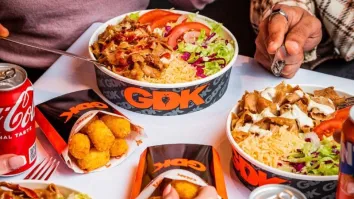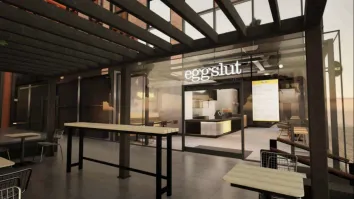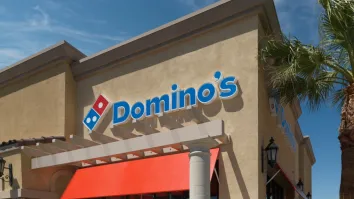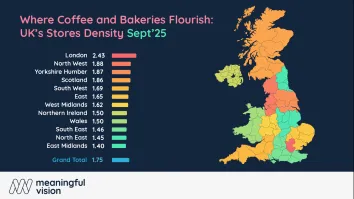To tech or not to tech
Revenue Management Solutions Managing Director Philipp Laqué provides an overview of tech "revolutions" that brands should consider.
It is a fact, consumers are more comfortable than ever before with the idea of technology playing a leading role in their dining experience and, as a result, tech-driven convenience – for both consumer and operator, will continue to be at the forefront of modern restaurant trends and profitability.
Making a dash from cash
The digital trend will carry on for cashless payment as the year progresses. According to trade body UK Finance, card payments stood at £13.2 billion at the end of 2017, overtaking cash for the first time.
Predictions also suggest half of all restaurants in America will be cash-free by the end of this year and these trends never take long to hit UK shores. Indeed, some home-grown operators have already stopped dealing in paper money, saving themselves time and takings along the way.
Manchester operator Sandbar went cashless last year and says the change has saved the business 40 hours a week on admin alone. Dealing in digital also has to mean premises are less attractive to thieves.
Is AI always right?
Artificial intelligence (AI) was barely out of tech news in 2018 and this year looks set to be no different. In January tech extravaganza CES 2019 showcased all manner of AI-generated advances - from toys and smart devices for the home to commercial and industrial uses.
Vast amounts of data pass through operators’ EPoS systems every day, with customers sharing food preferences, dietary requirements, birth dates and anniversaries. This year, AI is predicted to really run with this, using the information in the customer base to mine data for food trends and show which items, themes or customer profiles to focus on and when to really tailor marketing to them.
It’s predicted that by 2025, 30% of data will be processed in real-time, meaning operators can react instantly to market conditions, to implement dynamic pricing via digital menus or push special offers to fill empty tables.
TGI Friday’s sets a great example of AI in action. The company implemented AI-supported bots that allowed online conversations with consumers to be richer, leading to better engagement. It has given the brand the chance to make its marketing messages “hyper-relevant” to drive loyalty and sales. It started by adding data into its AI bots and found that by using customer preferences to send a marketing message to a person at a specific time of day, with a very specific call to action, generated a conversion rate of more than 70%.
Machine-learning is the backbone to this – by learning who a brand’s customers are, AI creates what it believes is going to incite them to take action. And it seems that most of the time, AI is right.
Chatting a whole lot of bot
Throughout 2019, Chatbots are expected to embed themselves further into social media platforms, driven by a virtual ambition to be an established order and payment channel. The rise in popularity of virtual assistants such as Alexa and Google Home will further this, as well as adding to the consumer desire for more voice-activated digital interactivity.
Although not an immediate priority for restaurant and bar operators, voice technology is something that should be on the tech radar. UK hospitality has traditionally shown itself to be a relatively late adopter of the opportunities presented by the internet and subsequently by mobile, with the US being the leaders. For example, we’re only just now really seeing wider use of menu screens and digital kiosks in the UK, coupled with a delayed interest in the power of order and payment apps, which naturally satisfies a consumers need for convenience, something which is never going to go away!
It’s all about the voice
When thinking about restaurant marketing for the voice tech age, operators should factor in the introduction of voice search optimisation in their apps and other online ordering channels, such as on websites or external sites. This is where they should include the option for voice response when answering customer FAQ pages. If they did, it would remove a team member from monitoring and answering what is perceived as a monotonous task.
Starbucks is a good example of a brand doing voice tech integration well. They’ve taken it one step further with the launch of ‘My Starbucks Barista’ on its app - a virtual assistant through which customers place their order and talk to their device. It then sends the request to the specified branch for collection with payment on-site. The brand has also optimised its integration with external assistants like Alexa, which is able to produce the last 10 stores visited by registered Starbucks users to make the voice-only order process simple for the customer.
In a similar vein, Domino’s allows pizza orders to be placed through Alexa, with its Alexa Pizza Skill. Customers who have added the skill to their Alexa are able to say “Alexa, ask Domino’s to feed me” and a pre-set order will be placed for delivery.
What isn’t quite so well known, however, is the value VR and AR are bringing to restaurants behind the scenes. Whether it’s using the digital layer of AR to show a new chef the proper portion size on the plate, or walking an employee through the process of a maintenance repair in VR, the technology has a lot to offer. For example, a head chef can be cloned for repeated playback to instruct the team on new menu items. Imagine how many other ways virtual training could benefit the business?!
There are any number of tech revolutions ahead for hospitality. However, it is clear. In order for operators to benefit from tech, they need to be proactive and implement the solutions that work best for their business. This isn’t about following a pack mentality - because it’s cool to be tech savvy, this is about having the confidence to make the right decisions to stay ahead of an ever growing pack!
























